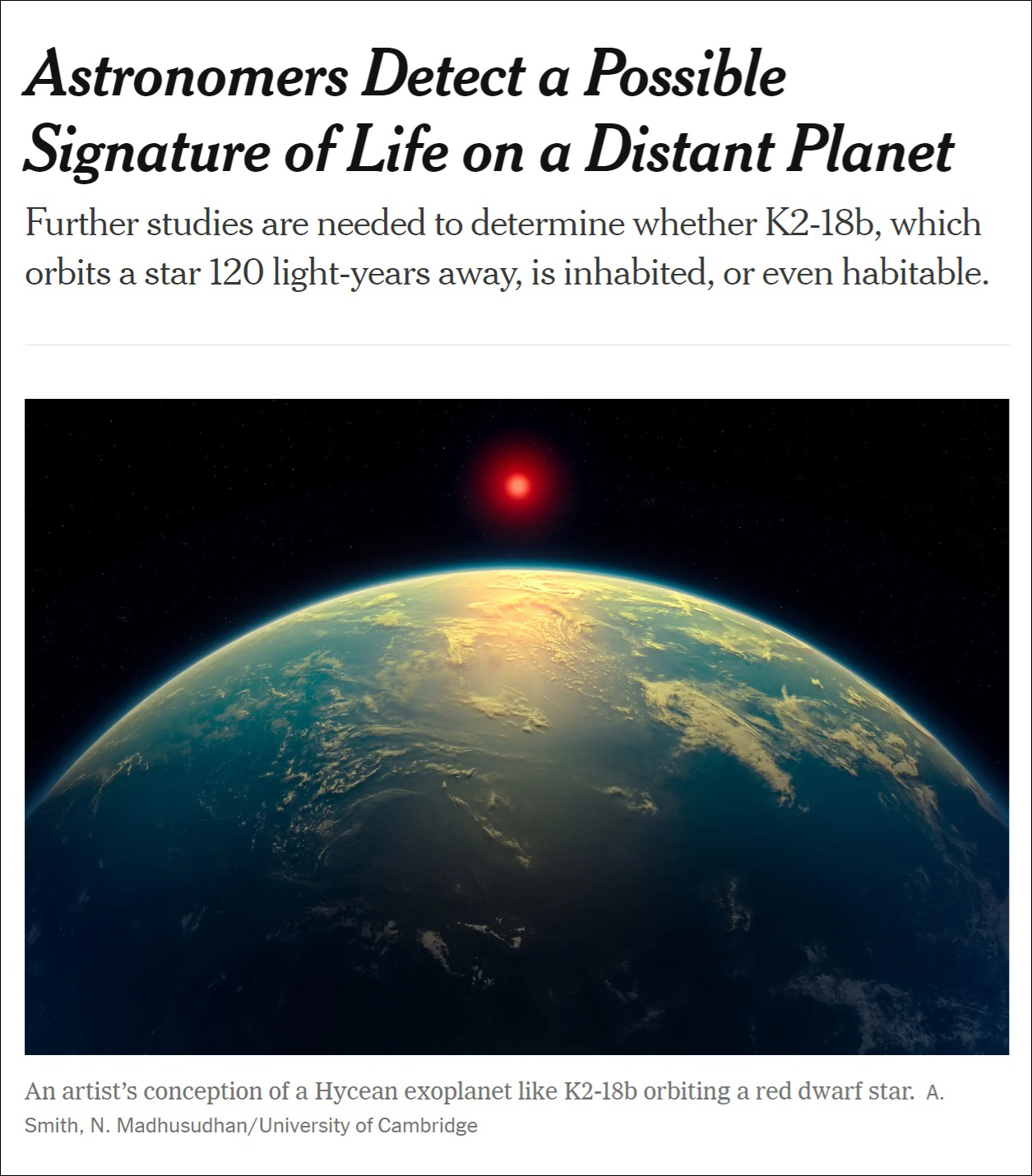While inspecting K2-18b, Dr. Madhusudhan and his colleagues discovered it had many of the molecules they had predicted a Hycean planet would possess. In 2023, they reported they had also detected faint hints of another molecule, and one of huge potential importance: dimethyl sulfide (CH₃)₂S, which is made of sulfur, carbon, and hydrogen.
On Earth, the only known source of dimethyl sulfide is life. In the ocean, for instance, certain forms of algae produce the compound, which wafts into the air and adds to the sea’s distinctive odor. Long before the Webb telescope was launched, astrobiologists had wondered whether dimethyl sulfide might serve as a sign of life on other planets.
Carl Zimmer writing for the New York Times

Red dwarf stars are the most common type of star in the universe and are characterized by being the smallest and coolest main-sequence stars. They are significantly smaller and cooler than our Sun, typically ranging in mass from 0.1 to 0.6 solar masses and having surface temperatures between 2,000 and 3,500 Kelvin. Due to their low mass and temperature, they burn their fuel very slowly and have exceptionally long lifespans, potentially lasting trillions of years. – Google Search Labs | AI Overview
A hycean is a warm ocean of water, wrapped in atmospheres containing hydrogen, methane and other carbon compounds.
An exoplanet is any planet outside (beyond) Earth’s solar system.

